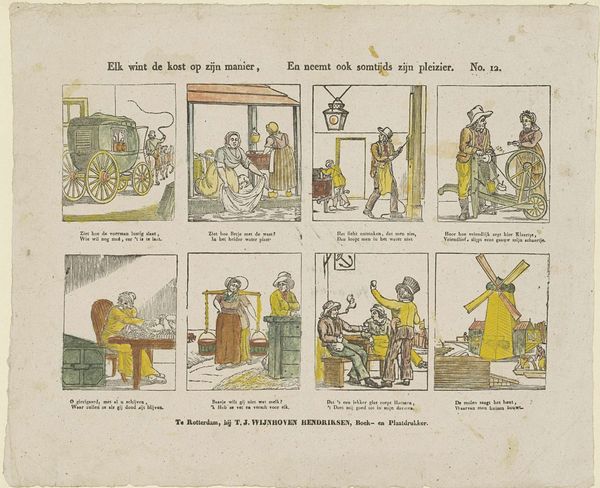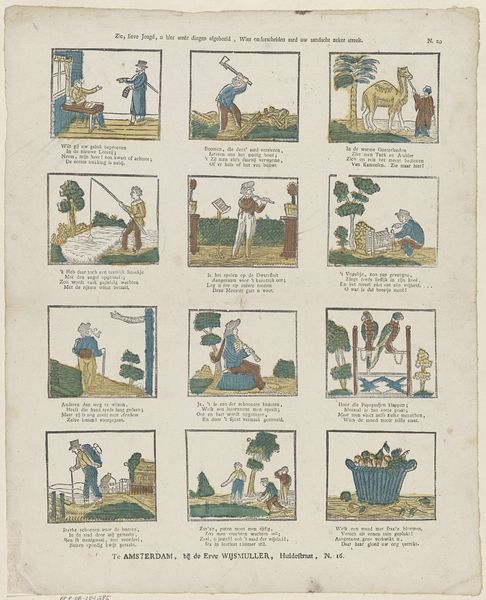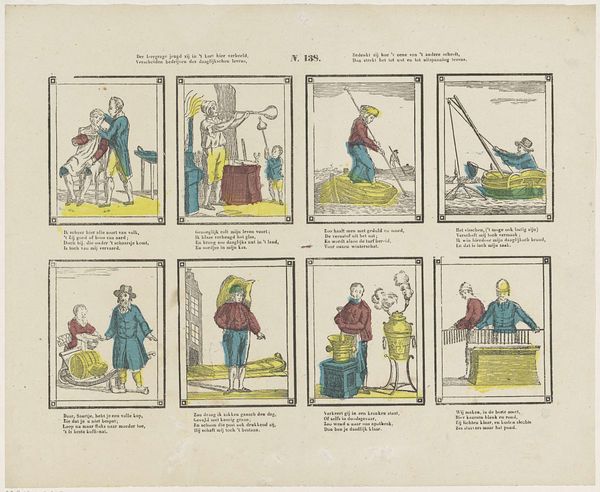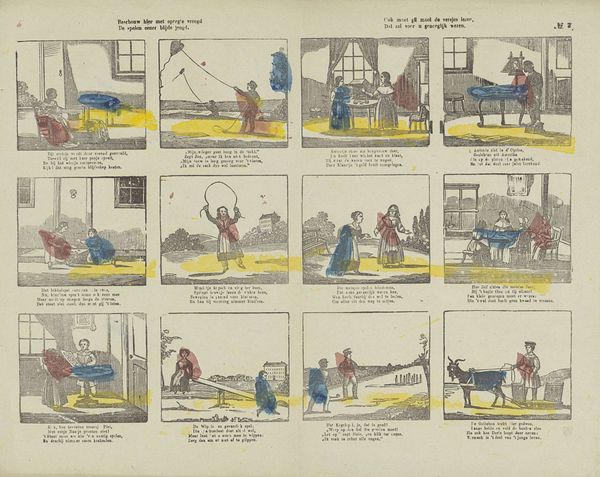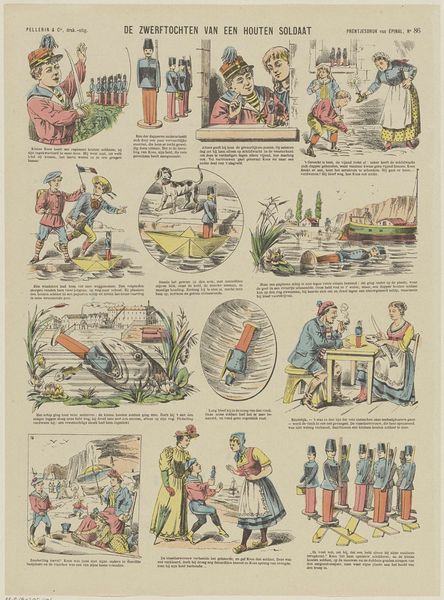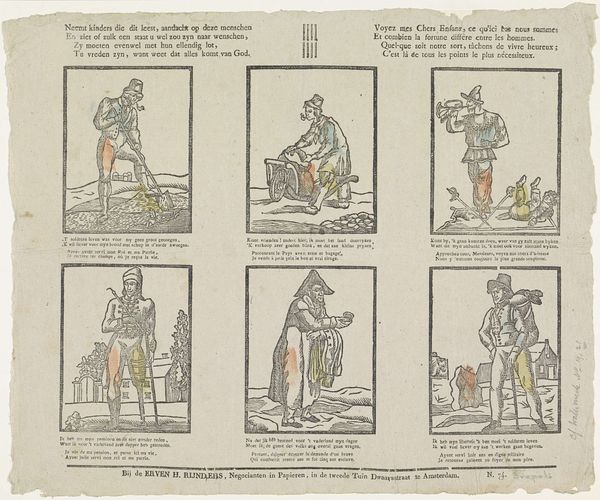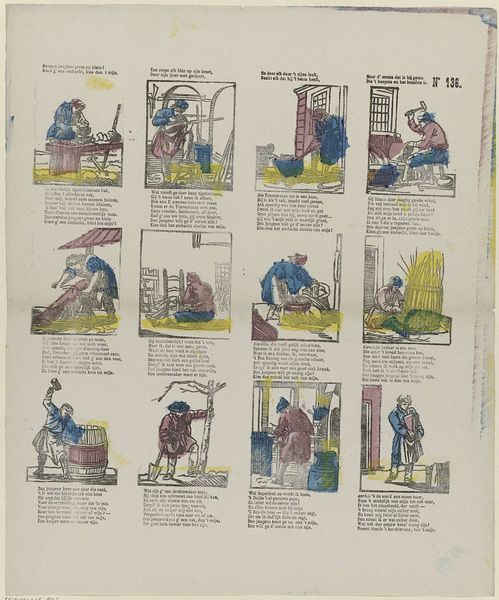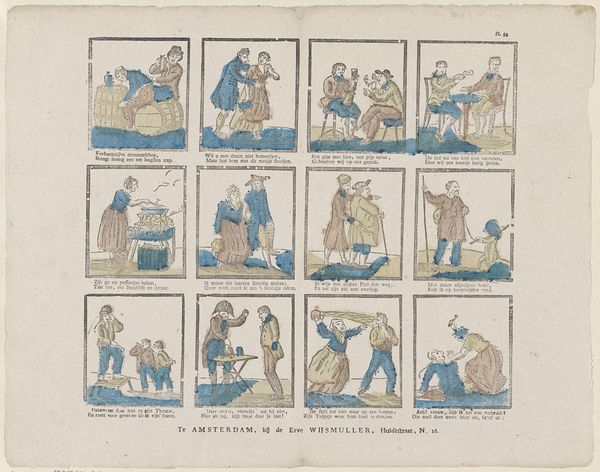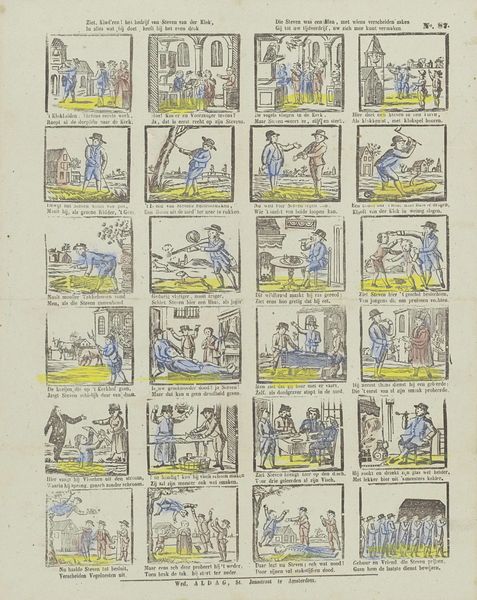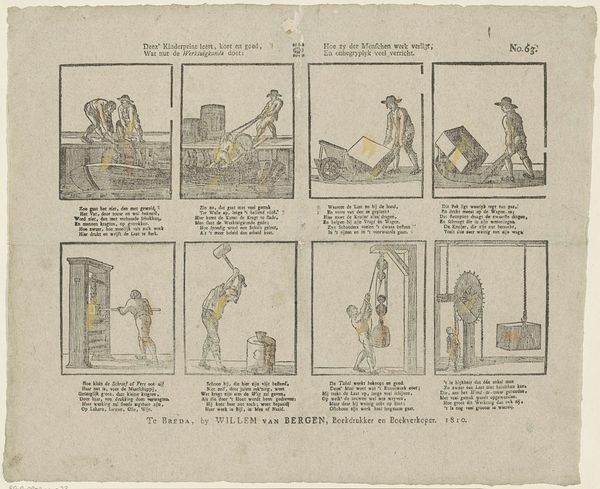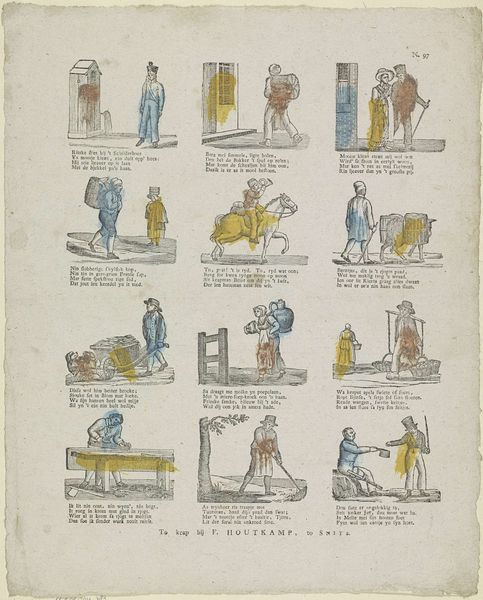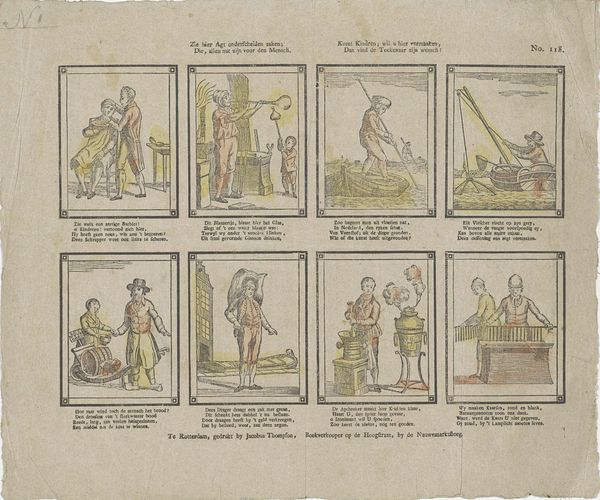
Elk wint de kost op zijn manier, / En neemt somtijds ook zijn pleizier 1832
0:00
0:00
theodorusjohanneswijnhovenhendriksen
Rijksmuseum
graphic-art, lithograph, print
#
graphic-art
#
narrative-art
#
lithograph
# print
#
folk-art
#
genre-painting
Dimensions: height 335 mm, width 417 mm
Copyright: Rijks Museum: Open Domain
This print, made in Rotterdam in 1832 by Theodorus Johannes Wijnhoven-Hendriksen, presents a series of vignettes, each illustrating how ‘everyone earns their keep in their own way.’ Notice the recurring symbol of labour: the tools, gestures, and settings associated with work. Consider the windmill, a motif that transcends mere representation to embody cycles of life and labour. The windmill’s repetitive motion, grinding grain into flour, mirrors the rhythms of human exertion. Think back to Don Quixote, tilting at windmills, which symbolizes the clash between imagination and reality, and the potential for delusion in human endeavors. Here, as in much Dutch art, the symbolism of labor reflects the era’s values. It speaks to a cultural ethos where diligence and industry are not just means to an end, but virtues in themselves. This symbolism touches a deep, subconscious level, reminding us of our shared human experience and the timeless cycles that govern our lives. These images echo through history, evolving with us, but always resonating with the fundamental aspects of our existence.
Comments
No comments
Be the first to comment and join the conversation on the ultimate creative platform.
